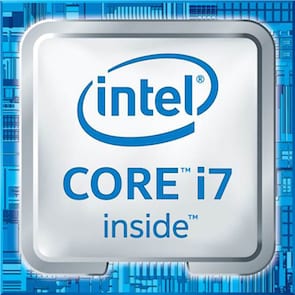 It’s that time of year when visions of sugar plum fairies bringing us new Macs dance through our heads. Or more likely, you’re considering buying a new Mac to replace an older model, or to give as a gift to a family member. Times being a little tight, you have your eye on one of the base models but you may be able to swing at least one upgrade to the Mac: a faster processor, more RAM, larger or faster (or both) storage, or a better GPU, but which upgrade should you choose?
It’s that time of year when visions of sugar plum fairies bringing us new Macs dance through our heads. Or more likely, you’re considering buying a new Mac to replace an older model, or to give as a gift to a family member. Times being a little tight, you have your eye on one of the base models but you may be able to swing at least one upgrade to the Mac: a faster processor, more RAM, larger or faster (or both) storage, or a better GPU, but which upgrade should you choose?
The answer depends on which Mac model you’re considering, and how you intend to use the Mac.
Before we get too far ahead of ourselves, I want to point out that although we’re talking about buying a new Mac, the same considerations can be in play for purchasing a used Mac, or for upgrading an existing Mac. So, if you fall into any of these categories, read on. And please add a comment or two at the bottom; it’s always nice to hear what upgrades would be your most likely choices. (See All Upgrades Compatible with Your Mac with OWC’s My Upgrades Tool.)
Are Faster CPUs a Good Idea?
Depends. You’re going to hear that a lot, but really, it depends not only on which Mac model you’re considering, but how you will use it. If you’re using one of the MacBook models, remember that increasing processor performance is likely to negatively affect overall battery runtime, while with desktop Macs, power usage isn’t as much of a concern.
Normally, I’m personally not inclined to spend upgrade money on processor speed. When the processor upgrade only involves a faster clocked processor of the same CPU family, I’m not impressed. As an example, consider a 15-inch MacBook Pro offered with a 2.9 GHz quad-core i7 processor. For $200.00 extra, a 3.1 GHz quad-core i7 processor is available as an upgrade.
Because they’re of the same processor family with the same number of cores, I wouldn’t expect much improvement in performance. This assumption is born out when comparing performance benchmarks with Geekbench scores that show only a bit more than a 3% increase in single-core results, and even less of an improvement in multi-core results.
On the other hand, CPU upgrades that cross processor model families or add additional cores may be worthwhile, depending on how you use your Mac.
Once again, an example: a 27-inch Retina 5K iMac with a 3.5 GHz quad-core i5 processor vs. the same iMac with a 4.2 GHz quad-core i7 processor. This $300 (as of publication date) upgrade not only changes the processor family from an i5 to an i7, it adds the ability to run two threads concurrently on each core, giving it an 11.9 percent single-core performance advantage, and a 30% multi-core performance increase. That’s a pretty good performance improvement for a $300 investment, provided you have a use for the extra horsepower and run apps that take advantage of multi-core processing.
For the most part, processor upgrades are limited to the time of purchase. The current exception is 2012 and earlier Mac Pro models, where it’s possible to replace the processor with a faster model. Replacement isn’t simple, but it can be done. If you’re considering this route, look for processors with additional cores and not just a faster clock rate.
Upgrading CPUs can be worthwhile if you’re routinely using your Mac for number crunching, media editing, or other processor-intensive tasks. If your primary uses are email, Internet browsing, and common workplace and educational tasks, maybe not so much.
RAM Upgrades
It used to be that RAM upgrades were one of the first upgrades users performed after receiving their new Macs. In many cases, it was a lot less expensive to buy RAM from OWC and install the upgrade yourself, than to buy directly from Apple at the time of purchase.
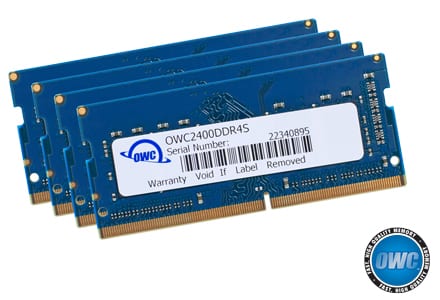
While you can still upgrade the RAM in some iMac models and the current (2013) Mac Pro, the rest of the Mac lineup uses RAM that is soldered to the computer motherboard, thus preventing user upgrades. This means you have to decide at the time of purchase how much RAM you wish to have both now and in the future.
Except for the base model Mac mini, which has only 4 GB of RAM, all other Mac models come equipped with at least 8 GB. Depending on the model, upgrades to 16 GB, 32 GB, 64 GB, or 128 GB are offered at time of purchase.
If the Mac model you’re considering doesn’t offer user upgradable RAM then it may be a very good idea to consider using some of your upgrade budget on RAM at the time of purchase.
The Mac OS does a pretty great job of managing RAM. Using techniques like compression, the Mac can squeeze quite a bit of performance out of available RAM. Adding more RAM will allow you to run more apps concurrently, allow RAM-intensive apps to perform better, or both, letting you run apps that need a lot of RAM space without having to close all of your other apps.
Upgrading RAM to 16 GB at the time of purchase for those Macs that don’t allow users to upgrade RAM would be a smart move. It would help to maximize performance now as well as extend the usable lifetime of the Mac.
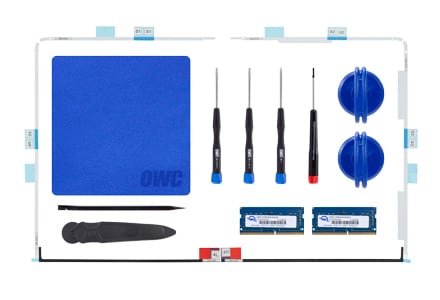
For Macs with user upgradeable RAM, it’s usually a good idea to purchase these models with the minimum amount of RAM installed, and then upgrade the RAM yourself, saving some serious money and gaining overall performance.
Storage Upgrades
This is a tough one since there are so many options available, not only from Apple but also from MacSales.com. That being said, since you’re purchasing a new Mac, you’ll likely notice that in most cases, Apple is either providing SSDs or Fusion drives, even in the base models. There are a few models that still offer platter-based hard drives in the entry configuration, but it wouldn’t surprise me to see this option soon be relegated only to educational and large corporate purchases.
Aside from the Mac Pro, none of the current Mac offerings allow users to upgrade the internal drives, at least not easily. That means you’ll need to make internal storage configuration decisions at the time of purchase or, with some Mac models, make use of an upgrade kit to change out the internal drive.
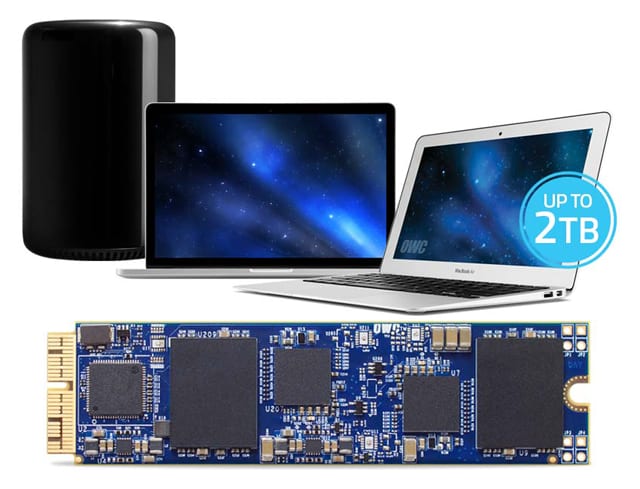
The writing is on the wall; once you go SSD you won’t be going back, at least not for your Mac’s main drive. Platter-based hard drives still have their place, but I think the most common upgrade question when it comes to storage, will be: do I go with all SSD or a larger Fusion drive?
On those Macs that only offer SSD options, such as the MacBook lineup, you’ll need to decide if your Mac is going to be used to carry around all of your data, or if only data that is immediately needed will be stored internally. If you don’t mind keeping your iTunes and other media libraries on an external drive or making use of iCloud storage, then smaller and less expensive SSD options may fit your needs.
If you prefer to carry your data around with you, a larger SSD may be more appropriate. At the time of this writing, Apple is offering 512 GB SSD upgrades for $200, and 1 TB models for $600. That’s quite a premium to pay for 1 TB, but the 512 GB may be large enough for most users, making it an attractive choice over the standard 256 GB models usually included. (MacBook Airs are still offered with 128 GB SSD standard, and 256 SSD upgrade at $200.)
Combining an SSD upgrade with an external drive for media libraries and general storage, and a second external for backup, may be just the versatile storage configuration you need.
Graphics Upgrades
Aside from the MacBook and MacBook Air models, all Macs offer multiple graphics processor options. In some cases, the graphics processor is bundled into a group; with other Mac models you can pick the graphic processors you wish from a short list of options.
In any case, the GPU is an at-time-of-purchase selection, and cannot be user upgraded at a later date. Which brings us to another question: should you maximize the GPU? The answer is, it depends not only on what you’re going to use the Mac for today, but also in the near future.
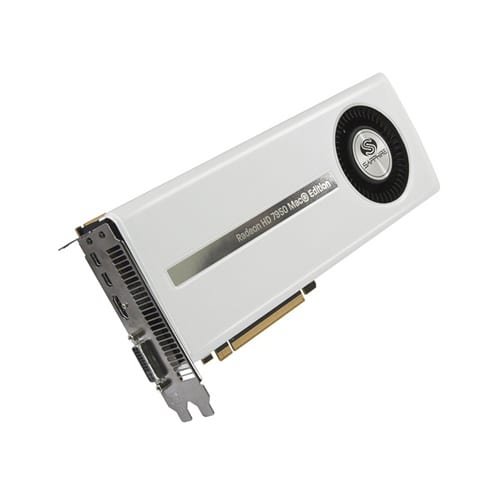
GPU upgrades are usually done for two reasons: gaining a bit of performance for games to ensure smooth performance, and gaining additional GPU processor cores that can be used not only for better graphics performance, but also by apps that need to make use of as many available processor cores as possible for the number crunching tasks they are involved in, such as rendering complex scenes and images.
Upgrading the graphics processors on a Mac usually only needs to be undertaken by those with specific needs. For general-purpose computing, the graphics option provided within the Mac bundle is usually sufficient for most uses.
Which Upgrade to Choose?
Generally speaking, RAM or storage is going to give you the best bang for the buck when it comes to upgrading a Mac. More RAM is going to let you do more; maybe not any faster, but you’ll be able to have more apps open without the overhead of compressing and decompressing memory. If you have apps that need a great deal of RAM space, then having additional RAM may speed some tasks up.
Storage upgrades in the form of faster or larger SSDs are going to provide you with performance increases that include the time it takes to boot your Mac and launch any app. If the apps you’re using perform a lot of disk writes or reads, such as media editing, then SSDs will speed things along. And don’t forget that APFS, Apple’s latest filing system, is optimized for SSDs and other flash-based storage media.
In the end, my first choice is more RAM, since a Mac’s memory can’t be upgraded except at the time of sale. Storage upgrades, on the other hand, can be performed using external storage and fast Thunderbolt 3 or USB 3.1 Gen 2 enclosures with SSDs installed within them.
But remember, that’s just a general recommendation. Your specific needs may point to a different upgrade as being the best choice for you.
For more tricks and guides, including the latest on macOS Mojave, check out the Rocket Yard’s Tech Tips section.
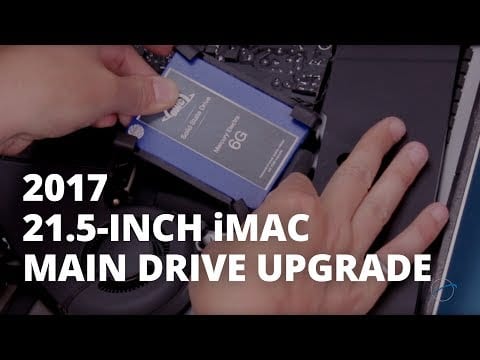
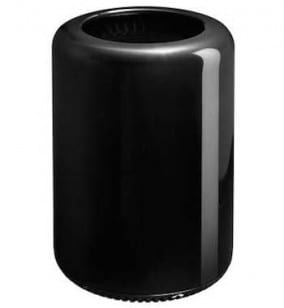







Hi, u say here that the GPU can be replaced or upgraded on Macbook Pros 2012 or earlier.
I have a LATE 2011 that came with those defective GPU and its been sitting there for a year, not working cause the GPU died. Everybody is telling me theres no way to replace it. But i read here that u CAN replace it???
I would love to hear more and how to do it and who does it? Is this something i can do myself? Or maybe my computer guy? Or do i have to take it to a professional COMPANY? Even professional companies told me it cannot be replaced cause its a SOLDERED PART.
Could u please explain what can i do? Cause right one week before the GPU died, i replaced the older HDD for a new 1TB SSD and a new battery. IN VAIN!
Otherwise my computer was running excellently, until the GPU died.
Thanks!
Unfortunately, it looks like you misread what was written. The article states that the GPU can be upgraded in the Mac Pro 2012 or earlier, not the MacBook Pro. There are many people who wish the GPU could be upgraded in all of Apple’s laptops!
I have the macbook pro with the spec below:
MacBook Pro Model No.: A1278
13-inch, Late 2011
Processor 2.8 GHz Intel Core i7
Memory 4 GB 1333 MHz DDR3
Graphics Intel HD Graphics 3000 384 MB
Serial Number C02H34Z5DV14
Software Mac OS X Lion 10.7.5 (11G63b)
I can not upgrade the software system, any advice if i can upgrade the RAM or processor to solve the problem or best to invest in a new Macbook
Hi Khatab. Unfortunately, the limitation is with the logic board, and so regardless of any hardware upgrades, that machine will not run any OS past 10.11.6
Totally agree. I just removed the SSD out of my 2012 retina MBP and will use it as an external drive while I save money by buying the base model and adding extra ram. cheers
I am really upset as my daughter bought a second hand iMac 2015 failing to check it could be ssd able so we had option to add one later. She asked the wrong question and ended up with the iMac 21.5 late 2015 16,2 2.8GHz i5 (let me know if need more detail of model) which I believe can’t have an SSD added. Am I right? If so do I have any option to improve the lag it has, perhaps adding sonething externally as you mentioned? Or should I try and exchange it for a model that can have a ssd added. I can’t afford anything more expensive but could afford maybe a 2014/2015 model. Have we got ourselves stuck with a slow computer, can anything be done, am I over estimating the importance of an ssd able model? (We can still exchange the computer in next few days and I do know someone who could upgrade internal RAM, storage etc if model allowed.)
Please help I am lost!Thanks so much for any help as I am really upset as we bought this to help her A level photography but it is running so slowly. Thanks again. Lucy
Hi, Lucy.
Please contact our customer support team and they will be able to help you with all of your questions. Thanks!
https://eshop.macsales.com/Service/
The Alternative To A Mac Upgrade
When you are using a Mac sometimes you can notice that over time your computer will be slower with a bit more lag than you are used to and that’s because sometimes information gets truly clogged up and starts overlapping and really destroying the functions that should perform normally. You do not need to upgrade your Mac anymore not with Detox your Mac. What this program does is it truly helps to clean out everything in your Mac and make it function better and faster than it has in a long time. Sometimes even restoring the factory quickly you had when you bought the computer to begin with. When you use a computer it becomes absolutely filled up with useless files and copies of files which you thought you might have gotten rid of but the fact of the matter is that everything is stored on a computer until you can really get in there and clean it with a product such as Detox my Mac simply because it gets down deep into the computer to places that a normal Mac user wouldn’t even go to look for things. Understanding full well that Mac computer are not cheap means that instead of getting an even more expensive upgrade you can actually use this product to help clean out everything that need to be cleaned out and get your computer up and running at peak performance.
Within just a few seconds after starting the program you can have it go through hundreds of thousands of files getting rid of everything that is useless. Having a hard drive full of useless information really does make things so much harder on the computer itself and can be a true frustration to someone who really needs to just get the job done on the computer but instead they are having to wait longer and longer periods of time for loads and downloads or even for the initial startup of the computer before they can get anything done. That’s the great thing about Detox my Mac is that it takes your computer and goes through file by file and everything that is useless it will get rid of it and help restore the Mac back to a point where you can actually get what you need to get done without issues or waiting or even the dreaded crashing. It’s not the standard files it goes through it also goes through the logs which can totally slow down the whole function of the computer even though they aren’t needed except for in development states that doesn’t seem to matter, this program will truly get in there and with an intelligent nature it will get rid of all the log files. It will also go through the language files and get rid of all the unused language files as well. This is very important because it can take a huge portion of your hard drive just storing unused languages and this gets rid of all of it.
I’ve always avoided clean-out programs because I didn’t trust the software to determine just what should be cleaned ou; for example, I have many thousands of images on my hard drive, including several variations of the same image in some cases, due to editing, but I want to keep all the images and I’m concerned a program to eliminate duplicate files may delete filesI deem important and want to keep. I the software you recommend safe for these situations?
I’ve always avoided clean-out programs because I didn’t trust the software to determine just what should be cleaned out; for example, I have many thousands of images on my hard drive, including several variations of the same image in some cases, due to editing, but I want to keep all the images and I’m concerned a program to eliminate duplicate files may delete filesI deem important and want to keep. Is the software you recommend safe for these situations?
Appreciate the analysis since I will probably be in the market for a replacement Mac in the foreseeable future.